AKR1C3-dependent lipid droplet formation confers hepatocellular carcinoma cell adaptability to targeted therapy
- PMID: 36451864
- PMCID: PMC9706585
- DOI: 10.7150/thno.74974
AKR1C3-dependent lipid droplet formation confers hepatocellular carcinoma cell adaptability to targeted therapy
Abstract
Rationale: Increased lipid droplet (LD) formation has been linked to tumor metastasis, stemness, and chemoresistance in various types of cancer. Here, we revealed that LD formation is critical for the adaptation to sorafenib in hepatocellular carcinoma (HCC) cells. We aim to investigate the LD function and its regulatory mechanisms in HCC. Methods: The key proteins responsible for LD formation were screened by both metabolomics and proteomics in sorafenib-resistant HCC cells and further validated by immunoblotting and immunofluorescence staining. Biological function of AKR1C3 was evaluated by CRISPR/Cas9-based gene editing. Isotopic tracing analysis with deuterium3-labeled palmitate or carbon13-labeled glucose was conducted to investigate fatty acid (FA) and glucose carbon flux. Seahorse analysis was performed to assess the glycolytic flux and mitochondrial function. Selective AKR1C3 inhibitors were used to evaluate the effect of AKR1C3 inhibition on HCC tumor growth and induction of autophagy. Results: We found that long-term sorafenib treatment impairs fatty acid oxidation (FAO), leading to LD accumulation in HCC cells. Using multi-omics analysis in cultured HCC cells, we identified that aldo-keto reductase AKR1C3 is responsible for LD accumulation in HCC. Genetic loss of AKR1C3 fully depletes LD contents, navigating FA flux to phospholipids, sphingolipids, and mitochondria. Furthermore, we found that AKR1C3-dependent LD accumulation is required for mitigating sorafenib-induced mitochondrial lipotoxicity and dysfunction. Pharmacologic inhibition of AKR1C3 activity instantly induces autophagy-dependent LD catabolism, resulting in mitochondrial fission and apoptosis in sorafenib-resistant HCC clones. Notably, manipulation of AKR1C3 expression is sufficient to drive the metabolic switch between FAO and glycolysis. Conclusions: Our findings revealed that AKR1C3-dependent LD formation is critical for the adaptation to sorafenib in HCC through regulating lipid and energy homeostasis. AKR1C3-dependent LD accumulation protects HCC cells from sorafenib-induced mitochondrial lipotoxicity by regulating lipophagy. Targeting AKR1C3 might be a promising therapeutic strategy for HCC tumors.
Keywords: Lipid droplets; Lipid homeostasis; Lipophagy; Metabolic reprogramming; Mitochondrial dysfunction..
© The author(s).
Conflict of interest statement
Competing Interests: The authors have declared that no competing interest exists.
Figures
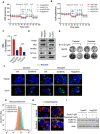
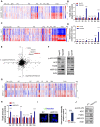
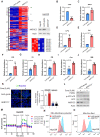
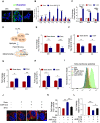
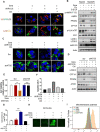
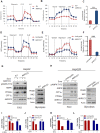
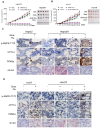

Similar articles
-
Aldo-keto reductase family member C3 (AKR1C3) promotes hepatocellular carcinoma cell growth by producing prostaglandin F2α.Oncol Res. 2023 Nov 15;32(1):163-174. doi: 10.32604/or.2023.030975. eCollection 2023. Oncol Res. 2023. PMID: 38188684 Free PMC article.
-
Discovery of Highly Potent AKR1C3 Inhibitors Treating Sorafenib-Resistant Hepatocellular Carcinoma.J Med Chem. 2025 Apr 10;68(7):7367-7389. doi: 10.1021/acs.jmedchem.4c03035. Epub 2025 Mar 27. J Med Chem. 2025. PMID: 40143712
-
Pre-clinical activity of PR-104 as monotherapy and in combination with sorafenib in hepatocellular carcinoma.Cancer Biol Ther. 2015;16(4):610-22. doi: 10.1080/15384047.2015.1017171. Epub 2015 Apr 14. Cancer Biol Ther. 2015. PMID: 25869917 Free PMC article.
-
The ménage à trois of autophagy, lipid droplets and liver disease.Autophagy. 2022 Jan;18(1):50-72. doi: 10.1080/15548627.2021.1895658. Epub 2021 Apr 2. Autophagy. 2022. PMID: 33794741 Free PMC article. Review.
-
Current status of sorafenib nanoparticle delivery systems in the treatment of hepatocellular carcinoma.Theranostics. 2021 Mar 13;11(11):5464-5490. doi: 10.7150/thno.54822. eCollection 2021. Theranostics. 2021. PMID: 33859758 Free PMC article. Review.
Cited by
-
Targeting selective autophagy and beyond: From underlying mechanisms to potential therapies.J Adv Res. 2024 Nov;65:297-327. doi: 10.1016/j.jare.2024.05.009. Epub 2024 May 14. J Adv Res. 2024. PMID: 38750694 Free PMC article. Review.
-
Cardiometabolic risk factors in MASLD patients with HCC: the other side of the coin.Front Endocrinol (Lausanne). 2024 May 23;15:1411706. doi: 10.3389/fendo.2024.1411706. eCollection 2024. Front Endocrinol (Lausanne). 2024. PMID: 38846491 Free PMC article. Review.
-
Defining the biological functions and clinical significance of AKR1C3 in gastric carcinogenesis through multiomics functional analysis and immune infiltration analysis.J Cancer. 2024 Mar 17;15(9):2646-2658. doi: 10.7150/jca.94228. eCollection 2024. J Cancer. 2024. PMID: 38577596 Free PMC article.
-
Identification and validation of five ferroptosis-related molecular signatures in keloids based on multiple transcriptome data analysis.Front Mol Biosci. 2025 Jan 6;11:1490745. doi: 10.3389/fmolb.2024.1490745. eCollection 2024. Front Mol Biosci. 2025. PMID: 39834787 Free PMC article.
-
GPAT3 is a potential therapeutic target to overcome sorafenib resistance in hepatocellular carcinoma.Theranostics. 2024 Jun 1;14(9):3470-3485. doi: 10.7150/thno.92646. eCollection 2024. Theranostics. 2024. PMID: 38948063 Free PMC article.
References
Publication types
MeSH terms
Substances
LinkOut - more resources
Full Text Sources
Other Literature Sources
Medical
Research Materials

